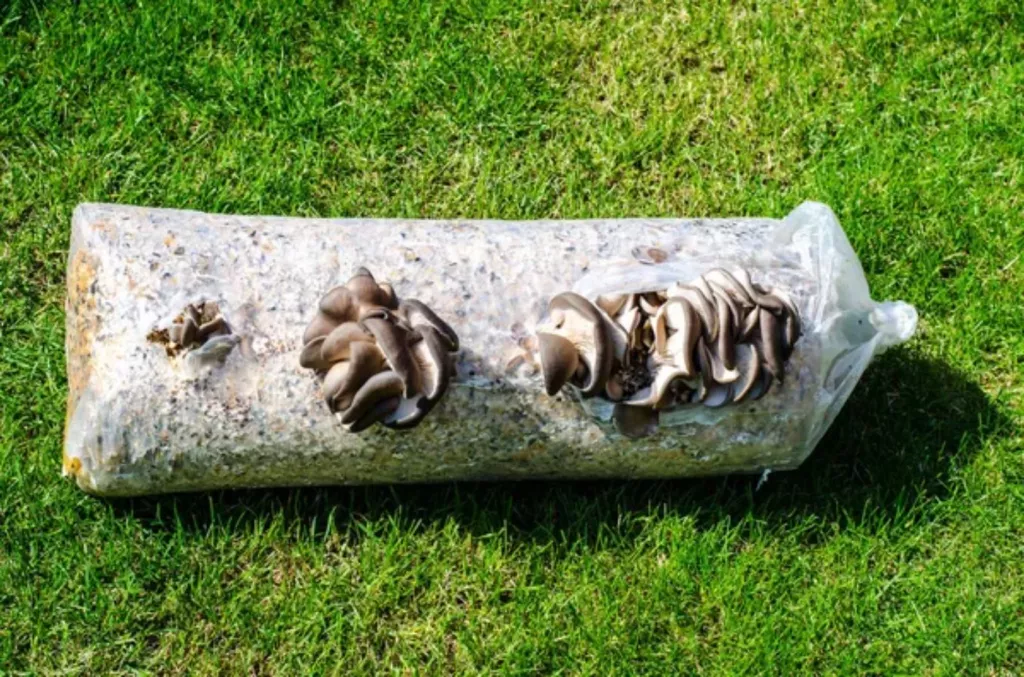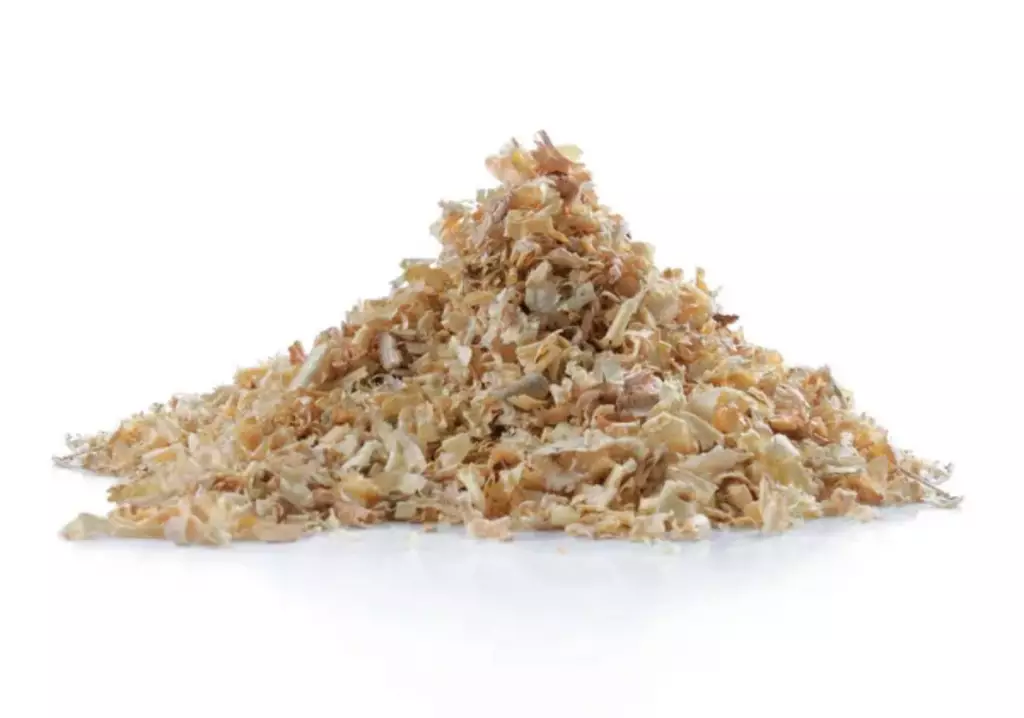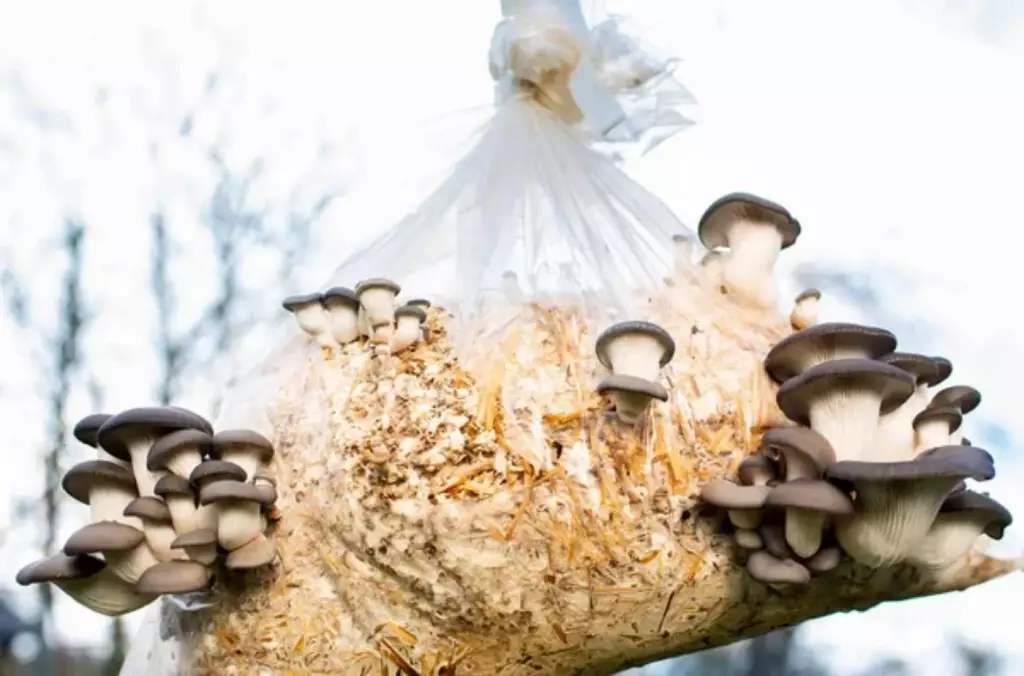Sawdust Spawn vs. Grain Spawn: Pros and Cons Compared
Spawn is the live mushroom mycelium that is grown onto sterile substrates such as grains, sawdust, or wood chips. It is the backbone of any mushroom farm operation and is equivalent to seed in plants. This article will help you weigh out whether sawdust or grain spawn is best for growing mushrooms.
Sawdust spawn has more inoculation points than grain spawn and allows mushroom pins to form faster. It is also cheaper than grain spawn and less attractive to pests and microbes. If you have larger substrates, sawdust spawn is a better option while smaller substrates can be inoculated with grain spawn.
Below is a more detailed comparison between sawdust and grain spawn and the factors you should consider when choosing the right spawn for your mushrooms. Let's dive in.
Summary
- The advantage of using sawdust spawns is that they are cheaper, less vulnerable to pests, and allow for faster colonization. The disadvantage of using them is they are hard to break apart when transferring and have fewer nutrients.
- The advantage of using grain spawns is that they are easier to handle and are nutrient-packed. The cons of opting for them are that they are expensive, slow to colonize, and vulnerable to contamination.
- Determining the best mushroom spawn type to use shall be based on its suitability to the substrate and the type of mushrooms you are growing.

The Difference Between Sawdust Spawn and Grain Spawn
Some of the most common substrates used for mushroom spawn are grains, sawdust, and wood chips. To decide whether to opt for a sawdust spawn or a grain spawn, below is a table comparing their characteristics:
| Sawdust spawn | Grain spawn | |
|---|---|---|
| Substrate used | Hardwood pellets and organic soy hulls | Organic millet, rye, wheat grains |
| Size of fruiting block to inoculate | Can inoculate larger substrates or fruiting blocks | Best used for smaller substrates or fruiting blocks |
| Ease of handling | Turns into one solid block when colonized so it will need the pressure to break | Easier to break up and pour |
| Spawn run time/ Colonization | Colonizes faster | Slow to colonize |
| Market cost | Cheap | Expensive |
| Vulnerability to pests/microbes | Less vulnerable | Vulnerable due to packed nutrients |
| Nutrient content | Less nutritious | More nutritious |
| Where to inoculate | Can be inoculated on logs, outdoor mushroom beds, pasteurized straw, cardboard, and wooden dowels to create plug spawn | Can be used to inoculate on sawdust spawn, create more grain spawn, or inoculate straw |
After knowing which substrate to use, follow the steps in this article to make fertile mushroom spawns the right way: How To Make Fertile Mushroom Spawn (the Right Way)
The defining characteristic that sets apart sawdust spawn and mushroom spawn is the substrate used to make each of them. Sawdust spawns are made by inoculating the live mycelium to hardwood pellets and organic soy hulls while grain spawns are made by inoculating grains such as rye, millet, corn, cereal, or wheat with live mycelium.
Although both can be used to inoculate larger substrates or fruiting blocks, sawdust spawn can do a better job than grain spawn in terms of large substrates). Sawdust spawn, therefore, makes a great choice for medium to large operations such as commercial mushroom farms.

In terms of ease in handling, when growing oyster mushrooms using grain spawn, the large grain particles make them easy to break up with even just a gentle massage. For sawdust spawn, the mushroom mycelium has the tendency to turn the sawdust particles into one solid block which can only be broken with some fist force.
When it comes to spawning run time or colonization time, sawdust spawn has an advantage over grain spawn. Mushroom mycelium grows rapidly on sawdust particles because sawdust particles are small and numerous which offers more inoculation points as compared to grain spawns.
With this, colonization is completed early using sawdust spawn, and in no time, you’ll get to see pinhead form.
You’ll also get to see more value for your money in sawdust over grain spawn. This is because the cost of grain is higher than sawdust. Grain spawns must undergo an arduous process of sterilization and must be processed under perfectly sterile environments.

Any mishap in providing a sterile environment for mushroom spawns, specifically for grain spawns, can be particularly detrimental. This is because grain spawns are highly vulnerable to microbes and pests.
Grain spawns, being made of grains, are rich in nitrogen compared to wood-based substrates. However, being nutritious make them prone to microbes such as bacteria and molds, and animals like rodents, birds, and insects.
On the other hand, a disadvantage of sawdust spawn is its lack of nutrition. This is why it is not advisable to grow mushrooms straight from just sawdust. Some mushroom growing kits made from sawdust are supplemented with wheat bran, mixed with grain spawn, or some other nitrogen-rich materials.
Sawdust spawn can be used to inoculate large quantities of logs, outdoor mushroom beds, pasteurized straw, cardboard, and other substrates. It can also be used to inoculate wooden dowels to create plug spawn. Since they are less vulnerable to contamination, sawdust spawn allows faster colonization.
Grain spawn, as mentioned, can be used for rather small substrates, so they are more frequently used to create sawdust spawn, more grain spawn, and inoculate other types of pasteurized substrates like straw.
Since grain spawns have more nutrients, they can be perfectly inoculated on sawdust blocks because they allow an even distribution of spawns throughout the block.
Grain spawns cannot be used in outdoor mushroom beds and log inoculation, as birds and rodents will consume the grains.

Mushroom spawn is the live mycelium, or vegetative part, of the mushroom, which is grown on a sterile and nutritious substrate. The use of mushroom spawn is the foundation of any mushroom cultivation or farming.
Mushroom spawns are used to inoculate larger substrates or fruiting blocks, which will then be used to grow mushrooms. These spawns are like seeds for a mushroom farm, but unlike seeds, the mycelium is already alive, so it must be handled and stored properly.
Mushroom spawns also differ from seeds in terms of genetics. Spawns can be easily cloned to achieve consistent production of a preferred cultivar of mushrooms. This is also one reason why spawn must be used instead of spores when growing mushrooms.
Since mushroom spawn is the backbone of mushroom farming, knowing the right way to make mushroom spawn is essential for mushroom growth. To make fertile mushroom spawn, you must first choose which mushroom species you will grow and which substrate to grow them in.
Choosing The Best Mushroom Spawn
There is no one-size-fits-all when it comes to choosing the best mushroom spawn for growing your mushrooms. But the ideal way is to match your spawn to your substrate. Below is a list of substrates best for each spawn type:
| Spawn Type | Substrate | |
|---|---|---|
| Sawdust spawn | Logs, wood chip beds, enriched sawdust, cardboard, outdoor beds of non-pasteurized straw | |
| Grain spawn | Pasteurized straw (for indoor use) and enriched sawdust |
If you want to grow your mushrooms on logs, a wood-based spawn such as sawdust will be the best fit. This is because the mycelium will not need to adjust to sawdust since it is familiar already with the material, therefore speeding up the colonization process.
Considering the type of mushrooms that you will grow is also important in choosing the spawn because some mushroom grows better on specific substrates. It takes only a little research to know your mushroom types and the best spawn to use based on the substrate to save you some time in venturing into mushroom cultivation.



